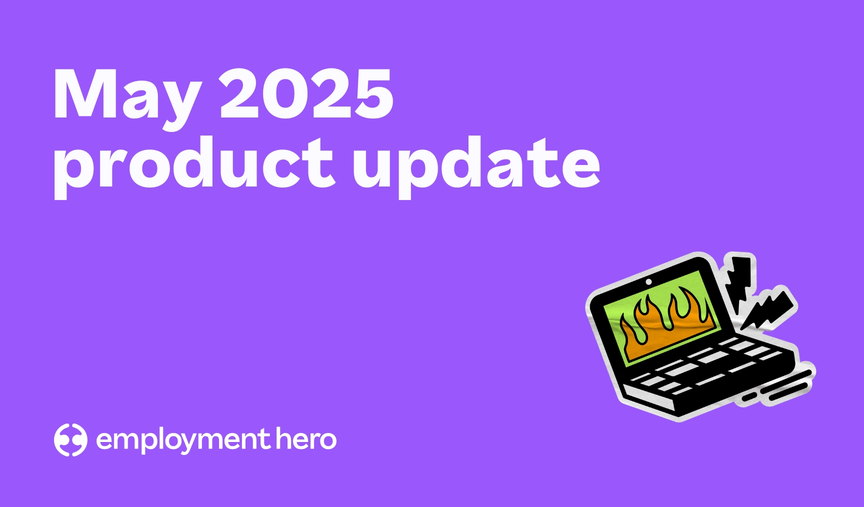What is digital transformation and how is the Malaysian government supporting it?
Here’s everything you need to know about the MyDIGITAL initiative, and how it will benefit MSMEs.

Digital transformation. It’s been constantly popping up in conversations, news articles, and government initiatives all over the world since the pandemic started — Malaysia included.
The pandemic has no doubt accelerated growth within the digital economy — forcing traditional brick-and-mortar enterprises to get online, paving the way for new digital businesses. Increasing the importance and reliance on digital platforms as millions of Malaysians turned online for their ecommerce, entertainment and even education needs.
We’re sure you definitely learnt a thing or two about the power of technology during the pandemic: from medical teleconsults to changing your Zoom backgrounds for meetings, online orders and home deliveries for almost everything under the sun, and even online team building games.
In light of this, to ensure that no Malaysian is left behind as the rest of the world rides on the wave of digitalisation, the government identified an urgency in building the foundation for Malaysia’s transformation towards an advanced digital economy.
On 19th February 2021, Malaysian Prime Minister Muhyiddin Yassin launched the MyDIGITAL initiative — as part of governmental plans to “transform Malaysia into a digitally-driven, high income nation and a regional leader in the digital economy.”
So what exactly is this MyDIGITAL initiative, and how will it help Malaysia on its journey of digital transformation? Let’s deep dive and find out.
What is the digital economy defined as?
The definition changes depending on where you are. Malaysia defines a ‘digital economy’ as economic and social activities that involve the production and use of digital technology by individuals, businesses and the government.
How widespread is digital adoption in Malaysia currently?
Digital adoption remains low and uneven across business sizes and sectors in Malaysia.
In fact, only one-third of Malaysian businesses have a website, compared to 44% globally. Internet usage is also highly concentrated in the manufacturing sector (90%), but lagging in sectors such as agriculture (61%). Unlike large firms, digital adoption among small and medium-sized enterprises (SMEs) is shown to be lower.

A study conducted by SME Corp and Huawei in 2018 found that SMEs in Malaysia are receptive to using digital technologies to enhance their businesses in general. However, about 30% of SMEs only look at information, communications and technology (ICT) as a productivity tool instead of a business enabler. A further 20% of SMEs tend to wait until other companies have invested in, tested and proven a particular technology before considering using it.

In addition, the study also found that SMEs are struggling to move beyond computerisation to digitalise their businesses. The use of business applications that have an impact on business productivity and operations drops to less than 20%, apart from the use of HR, finance and accounting software.
What is the MyDIGITAL initiative?
The Malaysian government realised that in order to stay relevant and competitive, they must embrace digitalisation and seize opportunities coming from this trend for sustainable, long-term growth.
MyDIGITAL is a national initiative aimed at empowering Malaysians through increasing digital literacy, creating high-income jobs, improving banking and finances, and providing better digital access to education and medical services in rural towns.
It is intended to complement national development plans such as the 12th Malaysia Plan and the Shared Prosperity Vision 2030 which have been previously announced. Malaysian Prime Minister Muhyiddin Yassin believes that; “It is also a digital transformation direction plan that is capable of enabling business sectors to compete on the global stage by strengthening the smoothness and efficiency of their operations.”
This initiative is expected to create 500,000 new job opportunities in the digital economy, which will contribute to 22.6% of Malaysia’s gross domestic product (GDP) by 2030.
How will the MyDIGITAL initiative be executed?
The Malaysia Digital Economy Blueprint is the action plan outlining the efforts and initiatives which will be implemented until 2030. It is led by 3 key principles:
- Inclusivity — to ensure that no one is left behind as a result of digitalisation;
- Ethics — to ensure that data and digital tools are used in an ethical manner; and
- Trust — to ensure the growth of the digital economy, without compromising privacy and cyber security.
Through this blueprint, the Malaysian government hopes to achieve 3 main objectives:
- Encourage industry players to become creators, users and adopters of innovative business models under the digital economy;
- Harness human capital that can thrive in the digital economy;
- Nurture an integrated ecosystem that allows society to adopt the digital economy.
Six strategic pillars have been identified — supported by 22 strategies, 48 national initiatives and 28 sectoral initiatives, which are to:
- Drive digital transformation in the public sector;
- Boost economic competitiveness through digitalisation;
- Build enabling digital infrastructure;
- Create agile and competent digital talent;
- Create an inclusive digital society; and
- Build a trusted, secure and ethical digital environment.
The implementation of this blueprint is divided into three phases:
- Phase 1: strengthening the foundation of digital adoption from 2021 to 2022;
- Phase 2: driving inclusive digital transformation from 2023 to 2025; and
- Phase 3: making Malaysia a digital content and cyber security lead in the regional market from 2026 to 2030.
What are the 3 main pillars of the MyDIGITAL initiative?
Three words — rakyat (a Malay word referring to the people or citizens of a country as a collective), businesses, and the government.
Below are the targets in which the MyDIGITAL initiative hopes to achieve:

Under the 6 strategic pillars identified earlier, are 22 key strategies outlined as follows:

We’ll delve further into T2, T4 and T6 as those pillars are the most relevant to SMEs in Malaysia.
Strategic thrust #2: Boosting economic competitiveness through digitalisation
As the economy transforms and digital ecosystems integrate, businesses that embrace technology and build on the digital economy will generate value and thrive.
And the Malaysian government has clearly witnessed that the mass adoption of digital technologies, as well as the establishment of connected digital services, are the main accelerators of economic competitiveness in advanced economies.
As such, this pillar is laser focused at accelerating digital adoption, empowering digital stewardship as well as shaping new value pools and emerging business models.
We’ve broken down the key initiatives SMEs should take note of, as outlined in the blueprint under the second strategic thrust.
1. Providing a tailored ‘Digital Compass’ for businesses to foster digital usage
In hopes of creating digitally savvy businesses that are successful in managing end-to-end service provisions, and also drive industry-changing innovations, the government wants to introduce a ‘Digital Compass’ to all businesses.
It is intended to act as a technological roadmap specific to different sectors and businesses of different digital maturity levels, and provide businesses with a step-by-step guide on the digital solutions available for different stages of their growth.
This initiative will also include an awareness programme on intellectual property (IP) benefits, to educate enterprises on the benefits of IP registration in their digitalisation journey.
2. Nurturing a dynamic IP system for the digital economy to encourage innovations
In order to ensure a more secure and conducive IP ecosystem, increased local IP registration and ownership, as well as a higher flow of innovation into Malaysia to spur IP development, the government wants to enhance the existing IP framework and laws to cater to the digital economy. The four types of IP that need improvement are; patents, trademarks, copyrights and trade secrets.
The programme aims to review and update existing laws, implement a digital IP enforcement strategy, understand the need for different rules and processes for products and services that are digitally generated and transacted, as well as enhance awareness of online branding protection using a Malaysian domain (.my).
3. Empowering local champions and stimulating investment through digital industry clusters
With the aim of establishing digital industry clusters as a regional hub, and for more local champions to become regional players, the government is hoping to spur economic development by raising the profiles of its digital industry clusters in foreign markets.
This will be done through promotional drives, participation in trade missions, and trade fairs — both internationally and locally. They are also keen to develop a single platform with a comprehensive database for investment opportunities, and increased ease of business collaborations within the clusters. Incentive packages will also be enhanced to attract targeted investors.
4. Incorporating comprehensive digital economy elements in international trade arrangements
This initiative aims to accelerate digital integration actions at the regional level to facilitate cross-border trade and investment, and lower the operating barriers for businesses. Particularly the MSMEs.
They aim to enhance trade arrangements and cooperation in strategic areas at bilateral and regional levels, by establishing a global framework that enables digital trade in a non-discriminatory and less restrictive manner.
5. Introducing fit-for-purpose tax framework to capture revenue from the digital economy growth
In order to facilitate fair competition for local businesses, and ensure a clear tax framework in promoting the digital economy, the government aims to develop frameworks and guidelines based on international best practices.
This will help to ensure that the income generated in Malaysia from cross-border digital activities is taxed in Malaysia.
Strategic thrust #4: Building agile and competent digital talent

This strategic pillar is aimed at creating future-ready digital talents who are well-equipped with the skills required to thrive in an evolving digital job market. It also aims to ensure that digitalisation is fully embedded and adopted at various levels of education, as well as in upskilling and reskilling programmes for the existing workforce.
We’ve captured the key initiatives SMEs should take note of, as outlined in the blueprint under the 4th strategic thrust.
1. Launching the “Social Entrepreneurs Circle” programme to equip social entrepreneurs with digital skills and a networking platform
The government wants to cement Malaysia’s position as a regional hub for social entrepreneurs. To ensure that social entrepreneurs have access to networking, mentoring and coaching opportunities, they’ve created a ‘Social Entrepreneurs Circle’ aimed at helping social entrepreneurs grow through digitalisation and increase their impact.
It will provide them with: access to webinars hosted by international social entrepreneurs, online training on digital technologies to improve their business processes, as well as monthly networking sessions. These upskilling programmes will include training in data science and cyber security, as well as mentoring from established digital companies and start-ups.
2. Introducing a training programme for senior managers to improve digital skills
To help narrow the digital gap between older and younger employees, the government aims to enhance the digital skills of senior management through a training programme led by the Ministry of Human Resources. It will be carried out online in collaboration with technology providers.
3. Streamlining reskilling initiatives by various government agencies onto a centralised portal for ease of access
Employers and employees will soon be able to access information on skills training and job availability through a centralised portal. By consolidating all the existing upskilling and reskilling training initiatives by different agencies onto the ‘MYFutureJobs portal’, it will provide greater transparency and convenience to everyone.
Companies will be able to access customisable training programmes, while employees will be able to explore career opportunities through this portal.
4. Introducing professional upskilling programmes related to the digital economy
These programmes aim to upskill the workforce with digital skills in areas such as cyber security, content creation, data analytics, system integration, AI and other relevant professional areas.
It will be carried out either by local universities or through online masterclasses. Companies who send their workers to these training opportunities will be eligible for tax deduction.
5. Introduce the ‘GigUp’ programme to equip gig workers with versatile skills
To ensure that gig workers from various educational backgrounds are given the opportunity to improve their employability and mitigate the precarity of their job, the government is creating the ‘GigUp programme’ to encourage companies to invest in training gig workers.
Training will be subsidised on existing online platforms such as Coursera, Udemy, edX and Code Academy.
Strategic thrust #6: Building a trusted, secure and ethical digital environment

As Malaysia embraces the digital economy, cyber security threats have increased as people generate, exchange and use data online more extensively. Financial constraints faced by MSMEs are one of the key challenges preventing a wider adoption of cyber security tools.
This thrust aims to enable businesses to fully reap the benefits of digital services without compromising safety, data security, privacy, reliability and ethical standards.
1. Encourage companies to invest in cyber security to create a safe, secure and trusted digital ecosystem
This initiative aims to increase cyber security awareness and adoption among companies, to reduce the risk of business losses due to cyber threats and attacks.
Companies are encouraged to leverage existing initiatives such as the Information Security Governance, Risk & Compliance Health Check Assessment, and cyber security empowerment programmes for MSMEs to determine the level of cyber security and investment needed for their own business.
How digital is your business?
Now that you’ve gotten an extensive overview of how the government is supporting digital transformation in Malaysia, as a business owner, it’s time for you to evaluate the needs and areas of improvement for your own business.
Are you doing everything in your power to gain efficiencies and enhance productivity through the use of extensive ICT?
If you’re still utilising excel spreadsheets and paperwork for your HR and payroll processes, it’s time to transform your business with Employment Hero.
We’re an all-in-one cloud-based platform that can help you streamline clunky processes, reduce manual administration (yes, even the human errors that come with it), and store all your important documents digitally and securely.
Take your business to the next level by leveraging the power of automation through HR and payroll software today.
Related Resources
-
 Read more: Product Update: May 2025
Read more: Product Update: May 2025Product Update: May 2025
Follow our May 2025 product update as we share all of the latest and greatest features we’ve released over the…
-
 Read more: Product Update: April 2025
Read more: Product Update: April 2025Product Update: April 2025
Follow our April 2025 product update as we share all of the latest and greatest features we’ve released over the…
-
 Read more: Product Update: March 2025
Read more: Product Update: March 2025Product Update: March 2025
Follow our March 2025 product update as we share all of the latest and greatest features we’ve released over the…









